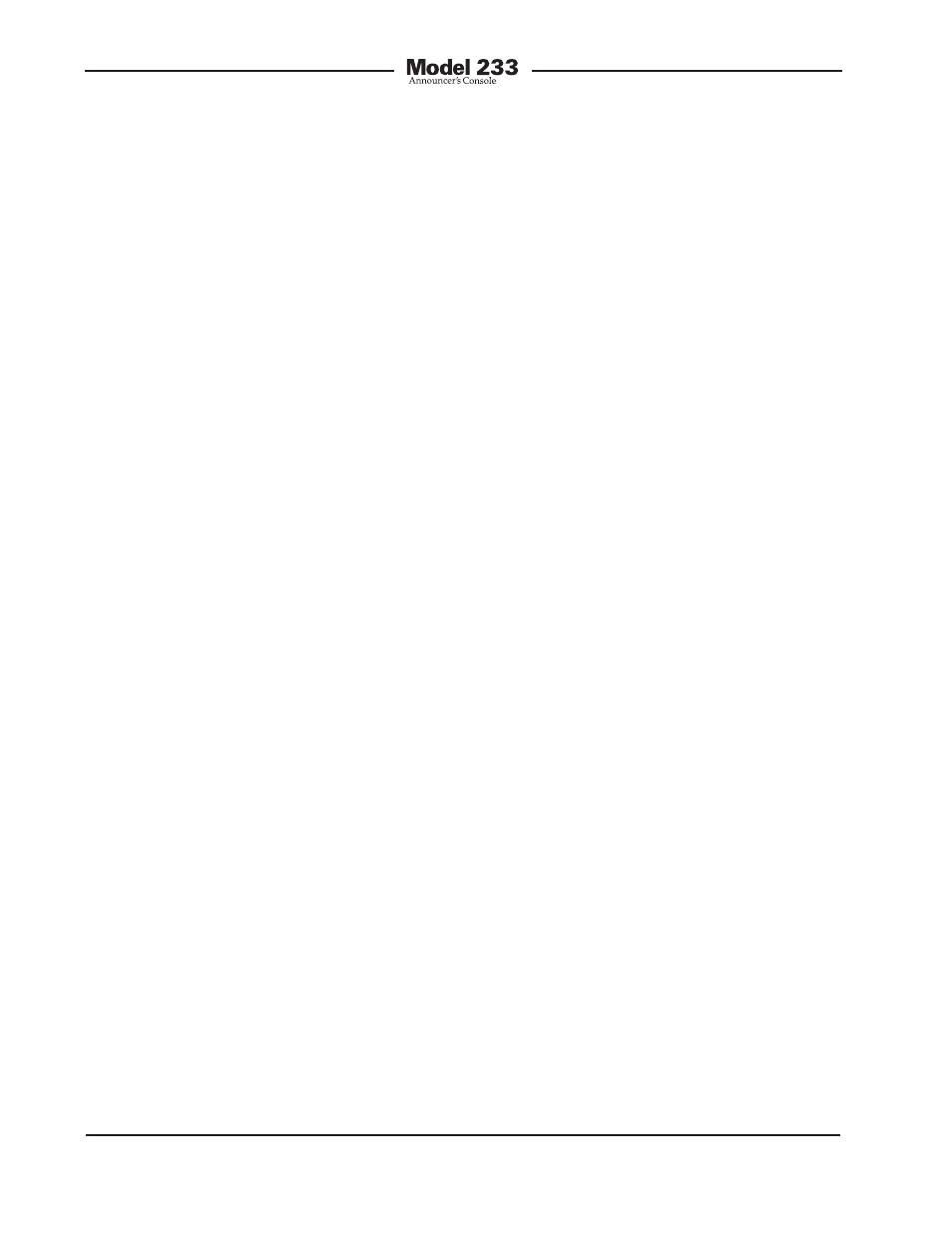Intercom channel crosstalk, Intercom audio levels – Studio Technologies M233-01151 User Manual
Page 36

Issue 5, November 2014
Model 233 User Guide
Page 36
Studio Technologies, Inc.
Intercom Channel Crosstalk
By the very nature of its design, a
2-channel party-line intercom circuit is
prone to exhibit crosstalk. This occurs
because the audio paths are unbalanced
(“single-ended”) and are typically trans-
ported on a single shielded twisted-pair
audio cable. The primary causes of the
crosstalk are the common signal return
wire and the capacitance between the
wires in the cable pair. The greater the
capacitance, due to cable type and length,
the more crosstalk there will be. It’s not
surprising to find in sports broadcasting
venues that audio from one channel can
be heard “bleeding” into the other chan-
nel. Does this generally create a problem?
No. But it can be a bit unnerving.
There are several ways of reducing inter-
com channel crosstalk. Probably the easi-
est way is to use cable pairs that are not
twisted. Twisted pairs are great for differ-
ential (balanced) signals, but not so great
for unbalanced transmission. This is gen-
erally because the more twists in a pair the
greater the effective cable capacitance.
In a stadium or arena setting, choosing
standard “telco” pairs may actually work
better than “high-performance” audio or
data cable!
Another option is to use two cable pairs
for each intercom circuit. If the pairs are
not shielded the wiring is simple. Common
would be connected to one side of each
pair, and then signal from each channel
would connect to the other side of the
pairs. If the pairs also contain shields the
wiring could be done somewhat differ-
ently. One option is to connect common
to both cable shields, intercom channel 1
(DC with audio) to one full pair, and inter-
com channel 2 to the second full pair. A
better option might be to have common
connect to both shields and one side of
the pair that serves channel 2.
Intercom Audio Levels
The Model 233 was designed to function
well with intercom lines associated with
standard broadcast and production
“party-line” intercom systems. These
systems provide DC power and one or
two channels of audio over standard
3-conductor cables that terminate with
3-pin XLR connectors. Establishing the
correct “listen” and “talk” levels was criti-
cal in achieving good audio performance.
In North America the two most common
intercom systems are those from RTS and
Clear-Com. From tests performed in Stu-
dio Technologies’ lab, the nominal RTS
TW-series audio level is approximately
–10 dBu. The dynamic range control
provided by beltpacks such as the BP325
was very good, limiting the maximum
level to at most 10 dB above the nominal.
The nominal audio level associated with
a Clear-Com system was harder to char-
acterize. It appeared to be a few dB less
than –10 dBu, but the dynamic range was
much larger. Level peaks of 10 to 20 dB
over nominal were easy to produce.
This objective data led to the following
Model 233 design decisions: When audio
from intercom channels 1 and 2 was used
as headphone cue sources level sensitiv-
ity selection switches or trim pots were not
required. The level range available on the
Model 233’s front-panel controls proved
to be sufficient for the user to be able to
establish the desired listening level.
When talkback audio was routed to the
intercom channels a single audio level
proved to work well with both RTS and
